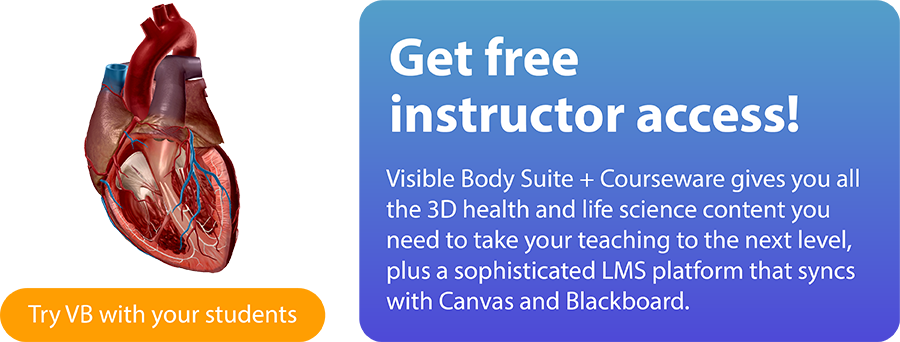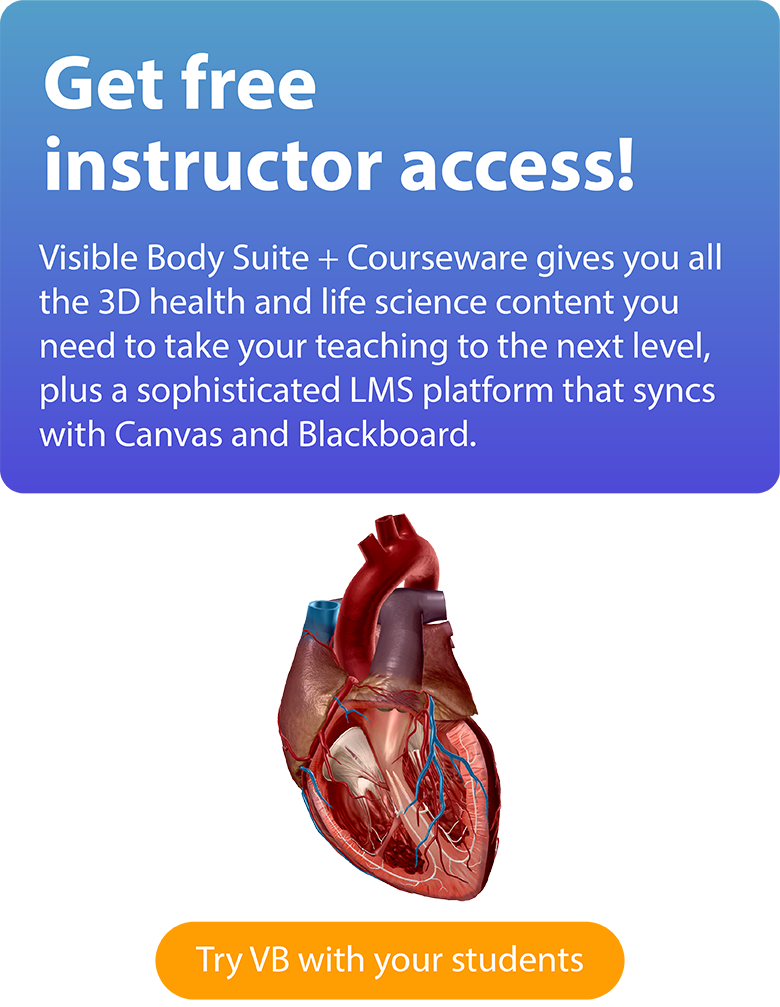Posted on 5/16/25 by Sarah Boudreau
We humans have a lot in common with our porcine friends—we’re mammals, we’re intelligent... and we enjoy “pigging out” from time to time.
There are also many similarities between pig anatomy and human anatomy. In fact, pigs are often used in biomedical research because of their similarities to human anatomy and physiology.
In this blog post, we will look at the heart, intestines, and uterus to examine some similarities and differences between human and pig anatomy!
A human heart and a pig heart may differ in shape, but they are functionally and anatomically very similar. Both species' hearts have left and right atria and left and right ventricles, and the hearts pump blood in similar ways—in fact, they are so similar that pig heart valves are often used to replace human ones.

The beating human heart model in VB Suite.
Oxygenated blood from the pulmonary veins enters the left atrium and moves into the left ventricle. The left ventricle then pumps the oxygenated blood to the rest of the body through the aorta. In both humans and pigs, the aorta is the body’s largest artery.
Through the anterior and posterior venae cavae, deoxygenated blood enters the heart's right atrium and empties into the right ventricle. The right ventricle pumps the deoxygenated blood to the lungs.

Pig heart model in VB Suite.
The path food makes through the digestive system is similar for humans and pigs. Like humans, pigs are monogastric, meaning they have one stomach. Some other animals, such as cows and sheep, have four stomach compartments. From the stomach, food moves into the intestines, where juices and bile break down the food into nutrients.
The small intestine is lined with small projections called villi, which increase surface area to aid in nutrient absorption. In the large intestine, water and electrolytes are absorbed and the leftover waste is pushed to the rectum.

Human intestines and villi in VB Suite.
The spiral shape of the pig’s intestines allows them to take up a smaller space in the abdomen. In a pig, the small and large intestines sit side by side. Compare that to the shape and location of a human’s intestines!

Pig model in VB Suite.
The pig’s uterus is made up of the uterine body plus uterine horns, and the cervix allows sperm to enter the uterus from the vagina.
Let's take a closer look at the uterine horns, the site for fertilized egg implantation and fetal development. The long, folded shape of the uterine horns allows for multiple births—you will find 11 piglets in the average litter!
 Pig model in VB Suite.
Pig model in VB Suite.
The human uterus is a very different shape.

Human uterus location GIF via VB Suite.
Humans, like many other primates, have what is called a simplex uterus, where the uterine horns are fused together, creating a pear-shaped organ. In humans, multiple births are rare—for example, for every 1,000 total deliveries, 12 are twins.
Instructors, Visible Body has all of the interactive 3D content you need to teach both pig and human anatomy! With Visible Body, virtual labs are a breeze as you and your students dissect and compare structures without the mess or expense of a wet lab.
With Visible Body Courseware, you can leverage Visible Body’s extensive library of 3D assets to teach and assess your students.
Visible Body’s wealth of premade content will get your course up and running quickly with interactive 3D content that engages your students. For example, the virtual pig dissection assignment takes students through pig anatomy step by step, while quizzes test what they've learned.

Part of the pig dissection assignment in Courseware.
Want to try Visible Body for yourself? Click the banner below!


Be sure to subscribe to the Visible Body Blog for more anatomy awesomeness!
Are you an instructor? We have award-winning 3D products and resources for your anatomy and physiology course! Learn more here.
When you select "Subscribe" you will start receiving our email newsletter. Use the links at the bottom of any email to manage the type of emails you receive or to unsubscribe. See our privacy policy for additional details.
©2025 Visible Body, a division of Cengage Learning